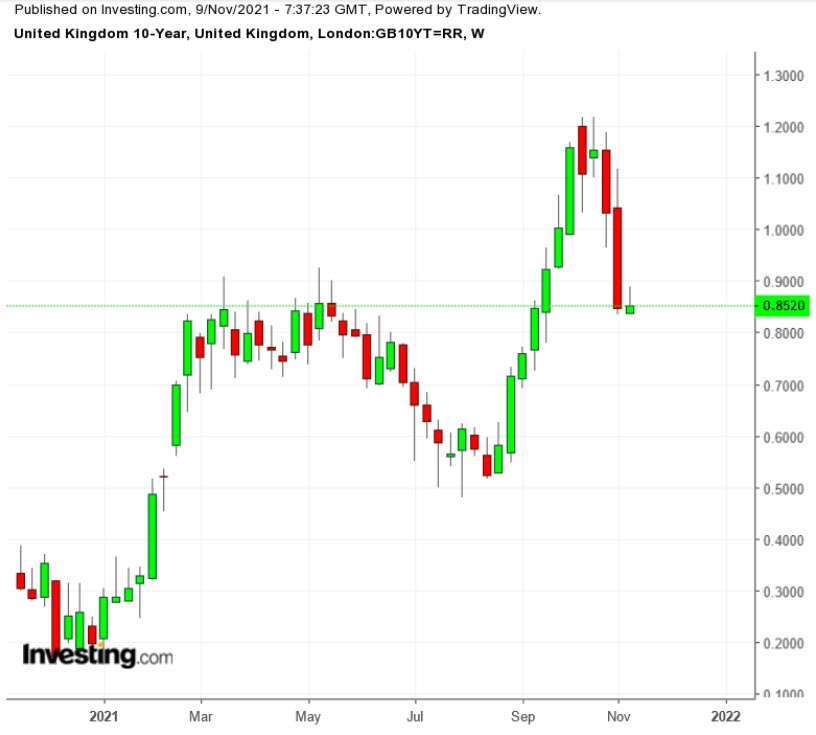The big story last week was how hedge funds, which amplify their gains and losses with leverage, got burned as long-term Treasury yields declined and shorter-term yields rose, flattening the yield curve and upsetting their bets.
The biggest swing came on the long end as bond investors—in one of those good news is bad news developments—took a better-than-expected US jobs report to mean continued economic growth that would entail rising inflation and increases in interest rates. Which in turn would drive lower growth, pushing investors back into the longer-term bonds, raising prices and lowering yields.
At the same time, the move by the Federal Reserve to start tapering its bond purchases weighed on short-term prices, boosting yields. The combination narrowed the gap in yields.
The picture was further clouded by the Bank of England holding back from an interest-rate hike after its messaging had convinced investors there would be an increase, signaling a wave of monetary tightening by central banks around the world.
Yield on the UK 10-year bond plunged after the surprise Thursday decision by the Monetary Policy Committee.

It dipped below 0.85% on Friday, exacerbated by the declining yields in US Treasuries following the jobs report. Earlier in the week, the 10-year gilt had yielded 1.1% in anticipation of a rate hike that never materialized.
No one is going to feel too sorry for hedge funds or their investors, but the turmoil reflects a deep uncertainty about the future of economic growth.
By Monday, investors were back on the inflation watch. After dipping below 1.5% last week, yield on the benchmark 10-year Treasury settled back near that mark after a rise of 4 basis points.

A short-lived spike above 1.5% was quickly pounded down.
Fed Chairman Jerome Powell said last week that it is “within the realm of possibility” that the central bank’s employment targets would be reached in the second half of next year, which would allow the Fed under its own strictures to start raising rates.
The producer price and consumer price indexes are due out this week, and they should give a reading on inflation trends.
The passage of the long-awaited $1 trillion infrastructure package in a late-night session of the US House, while cheered by Democrats who got the package across the finish line with Republican support, did little to dispel fears about inflation.
Planned Treasury auctions also led to some selling as traders positioned for new debt. The auction of $56 billion in three-year notes on Monday met with relatively tepid demand. Tuesday brings the auction of $39 billion in 10-year notes, and Wednesday, $25 billion in 30-year bonds.
Yields on sovereign bonds in the eurozone stayed low as Philip Lane, chief economist for the European Central Bank, reiterated the ECB’s belief that inflation will ease in 2022, despite market bets for higher rates.
Yield on the 10-year German bonds, which serves as a benchmark for eurozone, fell below minus 0.28% at one point on Monday, after getting above minus 0.08% the previous week. Italy’s 10-year yield dropped below 0.9% on Monday after hitting above 1.2% last week.
